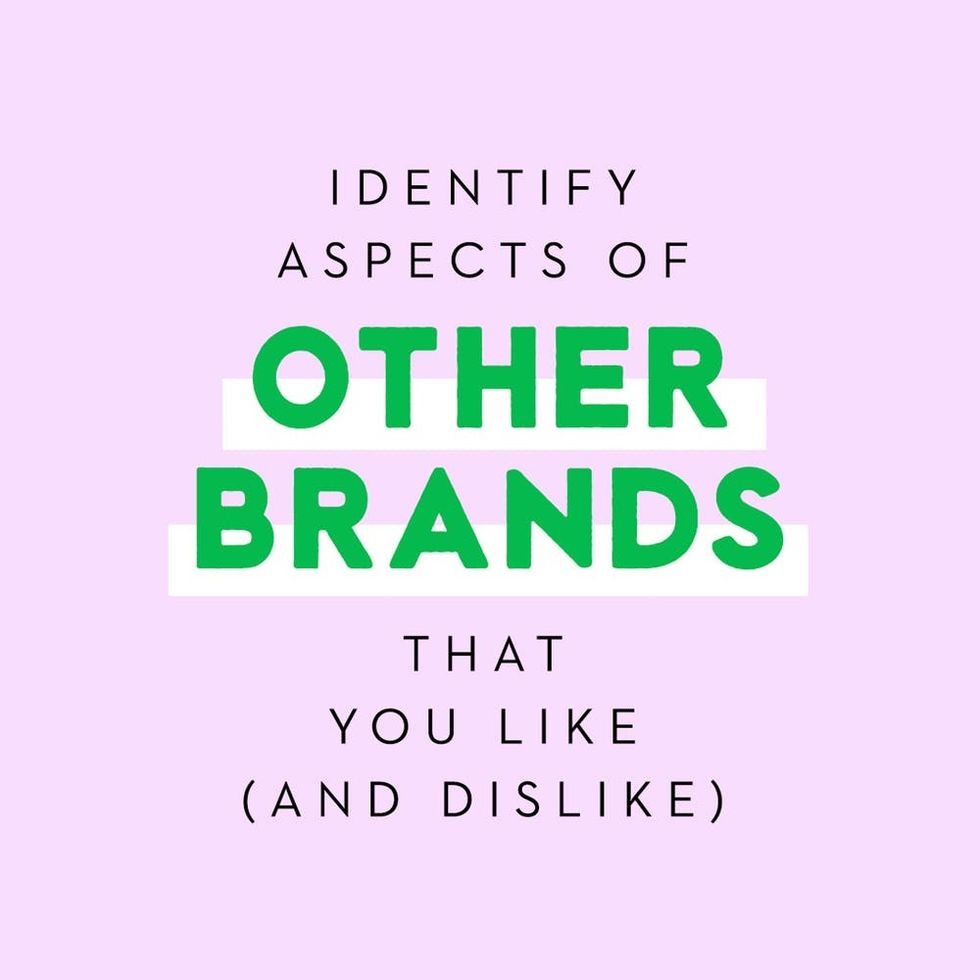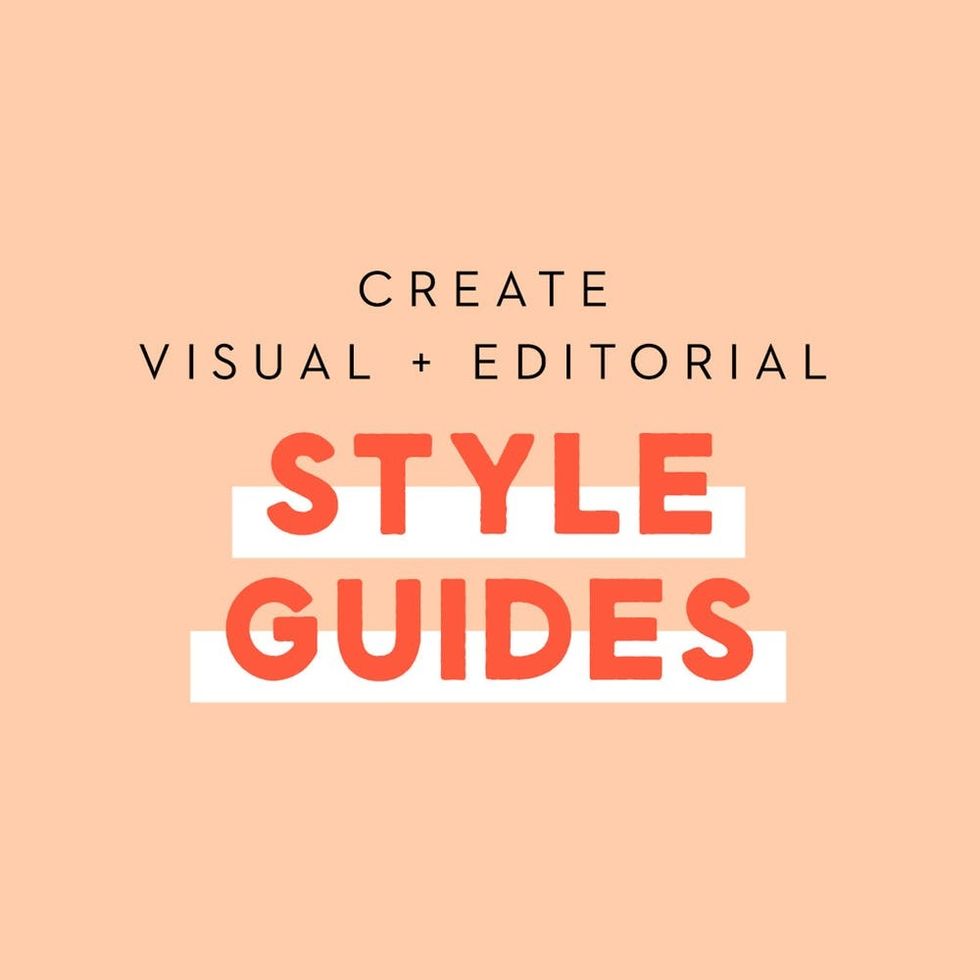
When you’re starting a business, you want to define both who you are as well as who you are speaking to — whether this is through copy, visuals, or the product/service you are offering. Even if you don’t plan on writing lots of longform copy or creating a library of visual assets, you’ll constantly find yourself asking “is this on brand?” Lucky for you, we’ve designed a guide to help you answer that question throughout the life of your business, sponsored by FedEx.

Anjelika Temple here, Chief Creative Officer (and first employee!) at Brit + Co. We defined the Brit + Co voice very early on and, though we are always pushing the boundaries of it as we grow, that core visual and editorial voice has remained the same: creative, relatable, authentic, and, of course, FUN! Throughout every evolution or shift in our brand, we always come back to the on-brand off-brand question, and often return to how we defined it in the first place. With that in mind, scroll on for our ultimate guide on how to define a strong voice for your brand.

1. Explore Likes and Dislikes With Digital *and* Physical Mood Boards: It’s easy to rely solely on digitally shared docs and boards, but it’s just NOT the same as printing things out and taping them up on a wall or bulletin board. So, I recommend a little bit of both. First, create a shared space online where you and whoever else you’re working with can add images (or links) that speak to your brand. Use it as a space to debate and discuss likes and dislikes so that you can hone in further on who you are. Then, do the same thing but in person! Print things out, tear out magazine pages, go to a paper store and buy a bunch of patterned prints, and tack all of these up. Use sticky notes to flag things that are SO on brand and things you’re unsure about. Take the good stuff and create a digital mood board. Look at that — one step closer to your visual voice and official style guide!

2. Write Out On-Brand and Off-Brand Words and Phrases: Next up, WORDS. This exercise applies to any brand exercise; it doesn’t matter if content and copy isn’t really part of your biz. Even if you’re just writing posts for social channels (which you should be, especially if you’re in the early stages of starting your business — helloooo free marketing!). You need to figure out who you are, who you’re talking to, *and* who you’re not. Are you sassy but not snarky? Are you candid but not self-deprecating? Are you into using the word “awesome” but not “excellent?” Write all of these things down and put them in two sections. Sticky notes are your friend when it comes to this exercise.

3. Identify Aspects of Other Brands That You Like (and Dislike): Sometimes the easiest way to figure out how to talk about yourself is to explore other brands you love. Make a list of brands you like and dislike and a few notes about why for each. Do you love a certain outdoor gear brand because of how much they give back to the environment? Do you dislike how sarcastic a certain brand is in their copy? Discussing these types of things will help you take your own brand’s personality to the next stage.

4. Figure Out What Differentiates Your Brand from Brands That Inspire You: Now, we know you’re a true original and the goods/content/service you’re peddling is one of a kind. But here’s the thing: There are a lot of really brilliant entrepreneurs out there that are worth learning from. Do your research and spend time figuring out what sets you apart. Is it your angle, tone, or point of view? Is it your non-traditional approach to fill-in-the-blank? Is it the way you manufacture products? Is it your origin story? Once you find the piece of the puzzle that makes your brand uniquely yours, shout it loud and proud from the rooftops!

5. Write a Mission Statement, Then Rewrite it 5 Times: Your mission is clear to you, but how do you communicate that to your customers, partners, and fans? Start by writing your mission statement without any limitations — write it in your voice like you’re talking to someone and like it’s okay if it’s four sentences long. Then condense and rewrite. Change up a few words to make them stronger and more to the point. Try saying it out loud. Does it sound super pitch-y and not like you? Time to rewrite.

6. Create Visual + Editorial Style Guides: Even if you’re going it alone at the beginning, it’s helpful to create a guidebook to reference on the regular. Include your mission statement here, a few pages of mood boards, themes and categories that are relevant to your business, things you believe in, and the nitty gritty design stuff: i.e. your logo and its many iterations; color palette; type treatments and so on.

7. Get an Outside Opinion (Take It With a Grain of Salt): Now that your voice is pretty well-baked, it’s time to bring in the peanut gallery. Share your style guide with a friend whose opinion you value, a former colleague, someone who fits the profile of your potential customer, and more. Consider the feedback they give you, then incorporate or ignore as you see fit ;)

8. Use Your Visual Voice to Define Your Physical Space: Surrounding yourself with a vibe that speaks to your brand’s voice can help you live and breathe your brand. When you’re setting up your office space or studio, use your style guide to make choices about color, art, and furniture.

9. Leave Space to Evolve: What’s that they say about rules being made to be broken? You have to make sure you give yourself some wiggle room. Define your voice, get your style guide set, and then accept that you’ll want to evolve every so often. To avoid a rabbit hole of constant edits and tiny adjustments, set up a time (quarterly is ideal) to revisit your style guide and brand voice. Add in new patterns, styling ideas, and products, and then quickly move on. Time marches on and so should your brand.

10. Update Your Style Guide Annually: For the bigger updates, we recommend giving your style guide an update every year. Give your mission statement a read — is it still accurate? Does it still feel forward-thinking? Update it if not. Has your color palette and vibe changed over the course of the year? Maybe you want to explore adding a few new colors and elements and say sayonara to some of the oldies but goodies. Now’s the time to make those adjustments and make sure that you are looking to the future as well.

And there you have it, 10 easy steps to crafting your brand’s very own voice.
We’d love to hear about your experience defining your brand! Tell us how it’s going on Twitter @BritandCo.
Sponsored by FedEx.
Author: Anjelika Temple
Design: Marisa Kumtong
Photography: Chris Andre
Styling: Lee Schellenberger

















